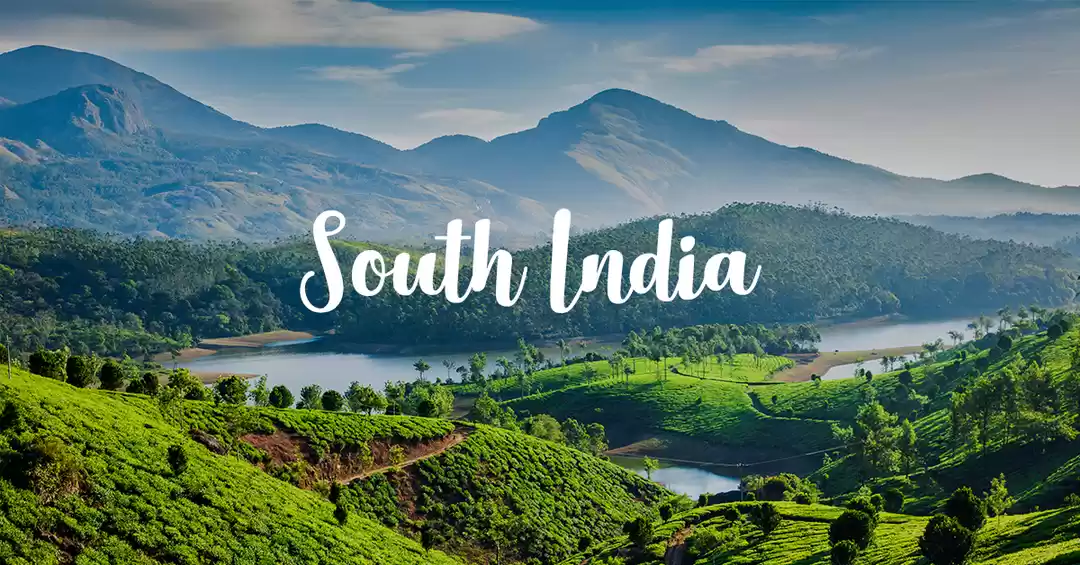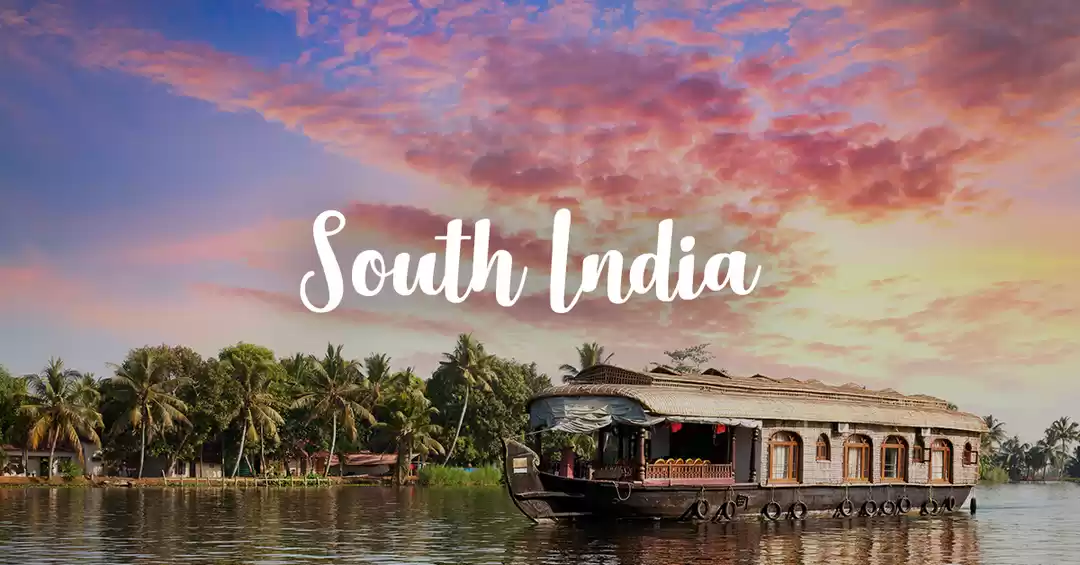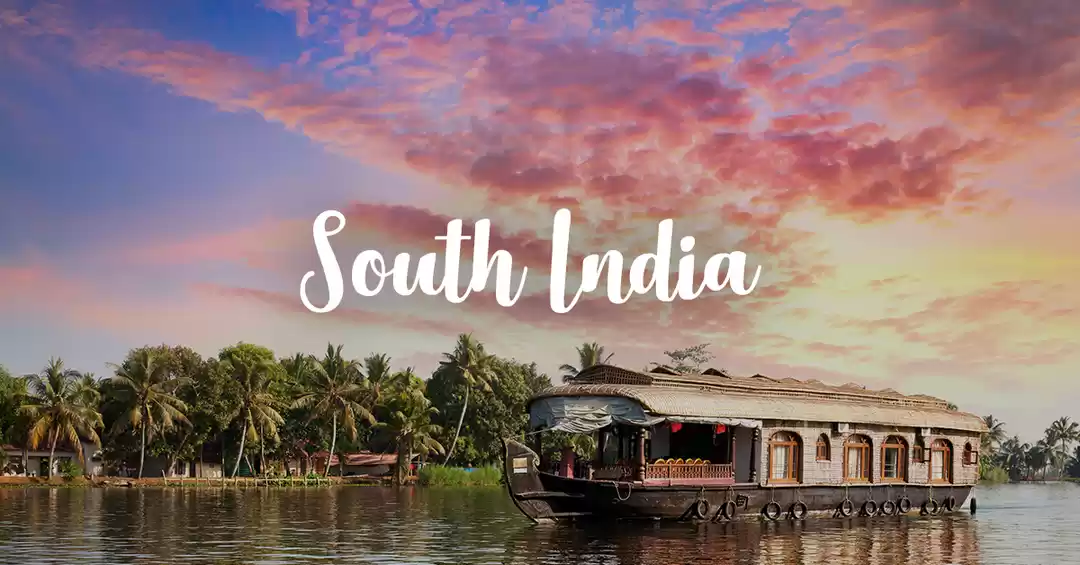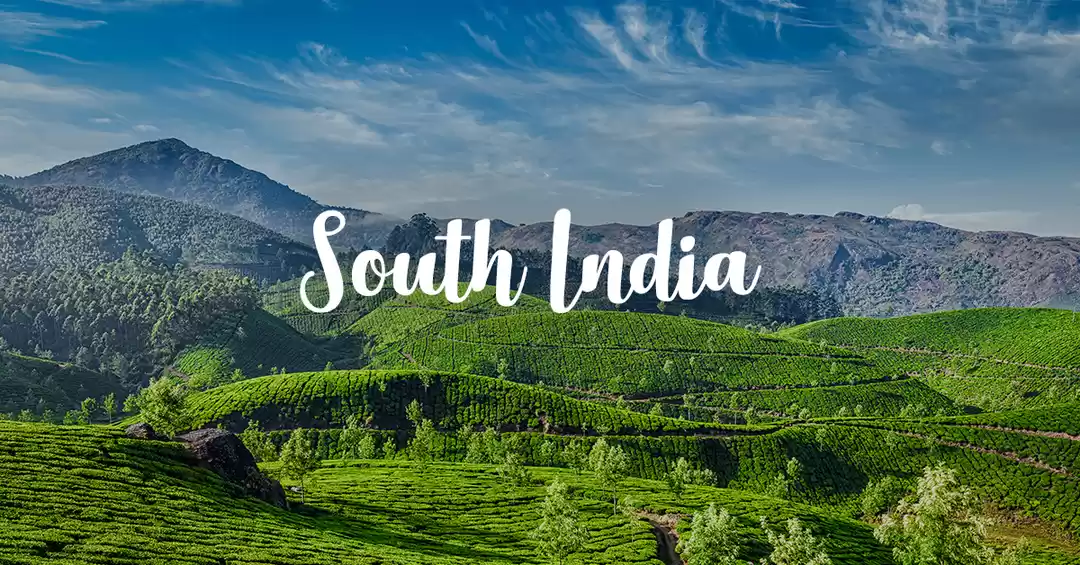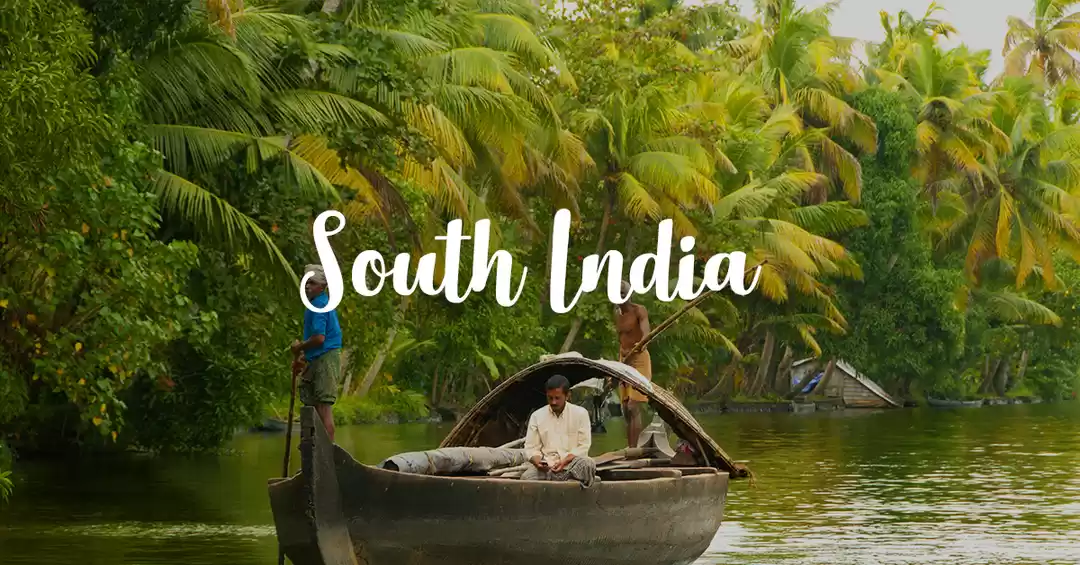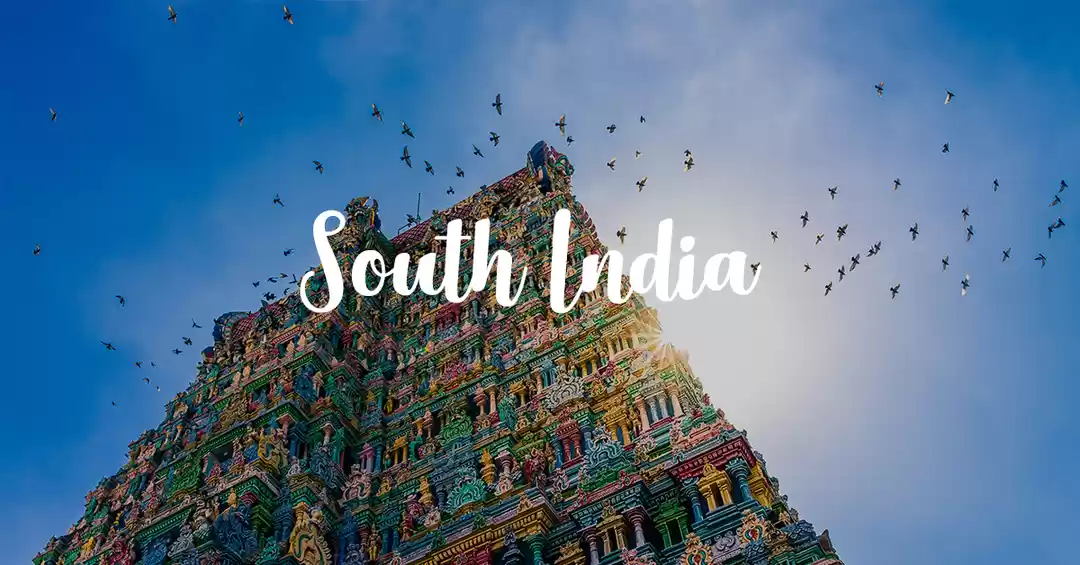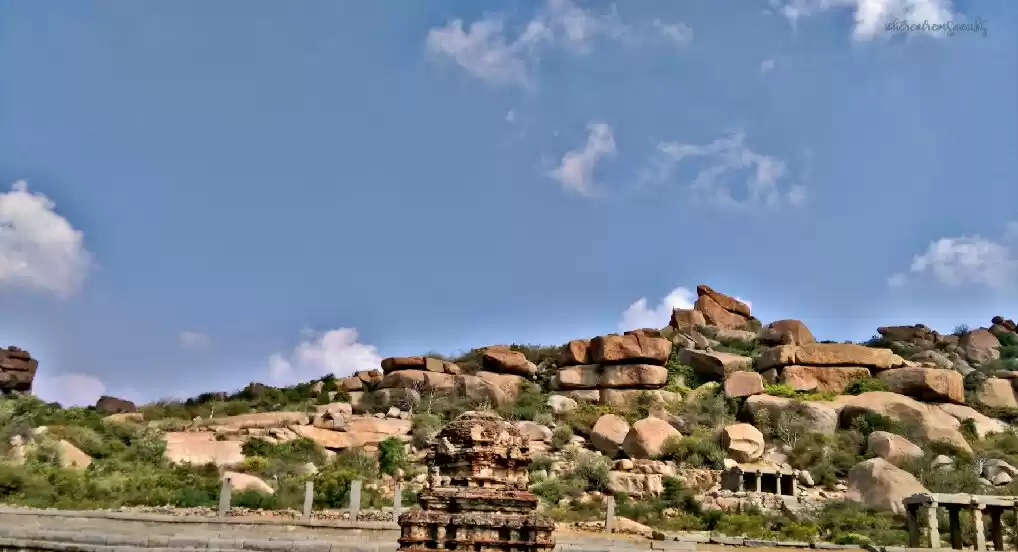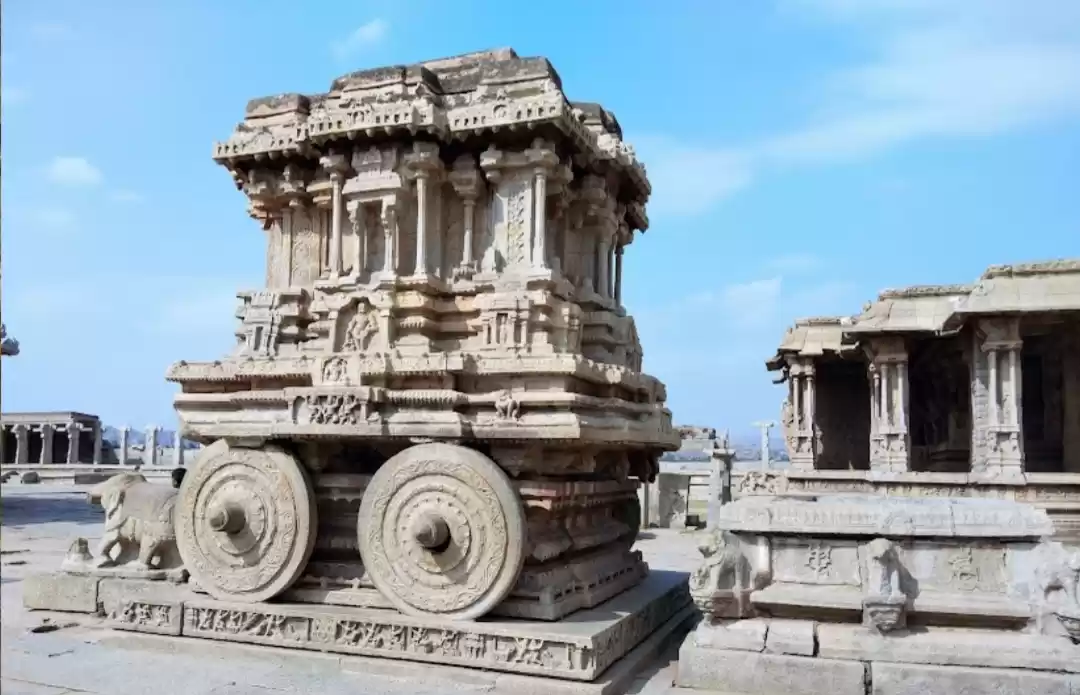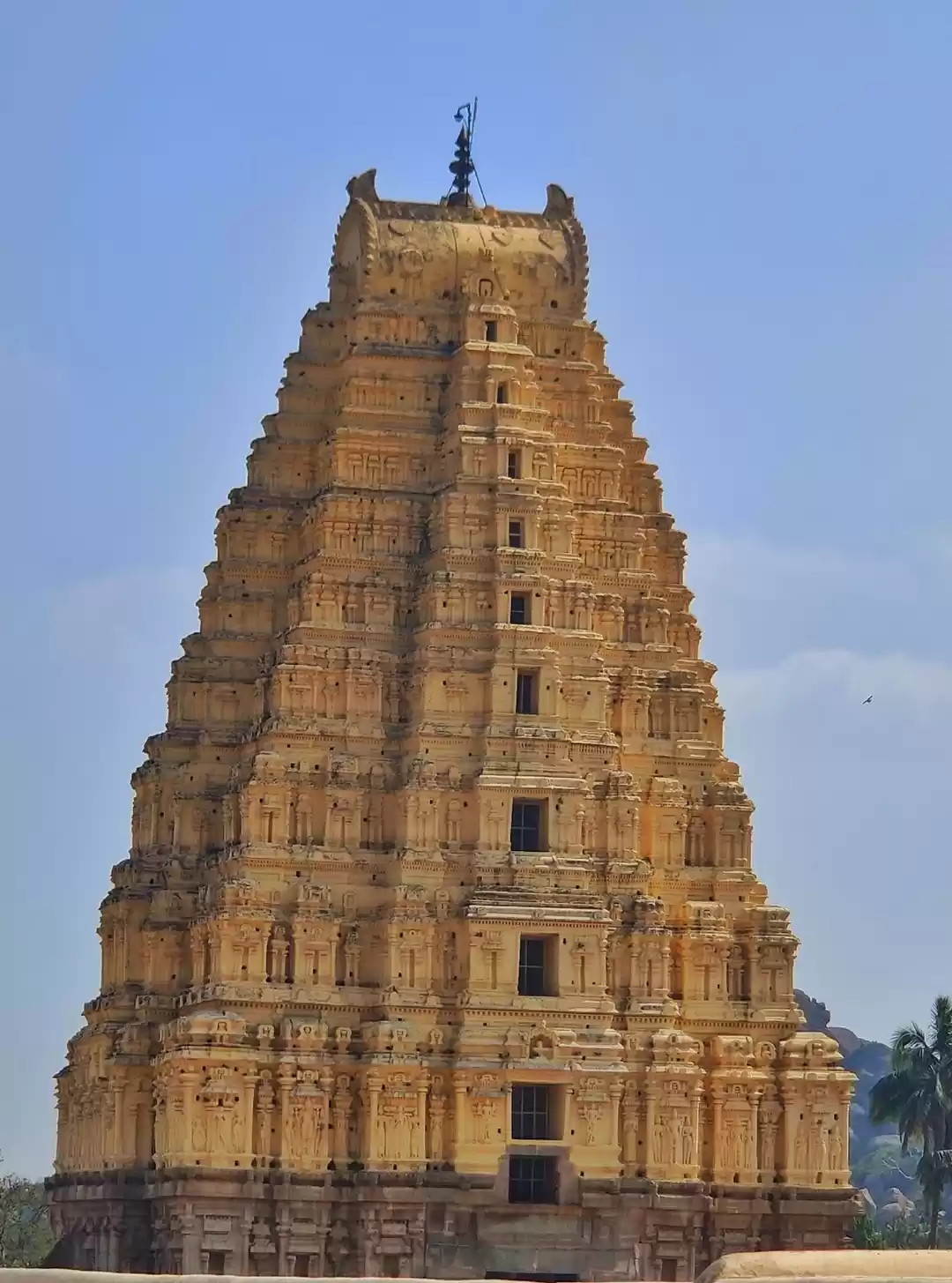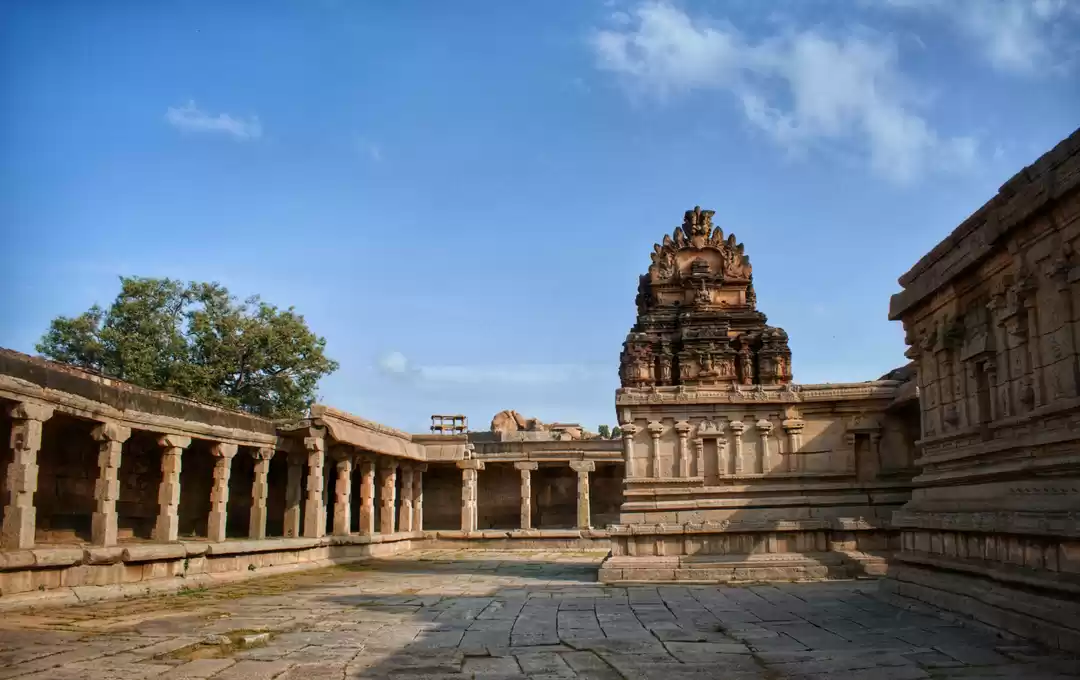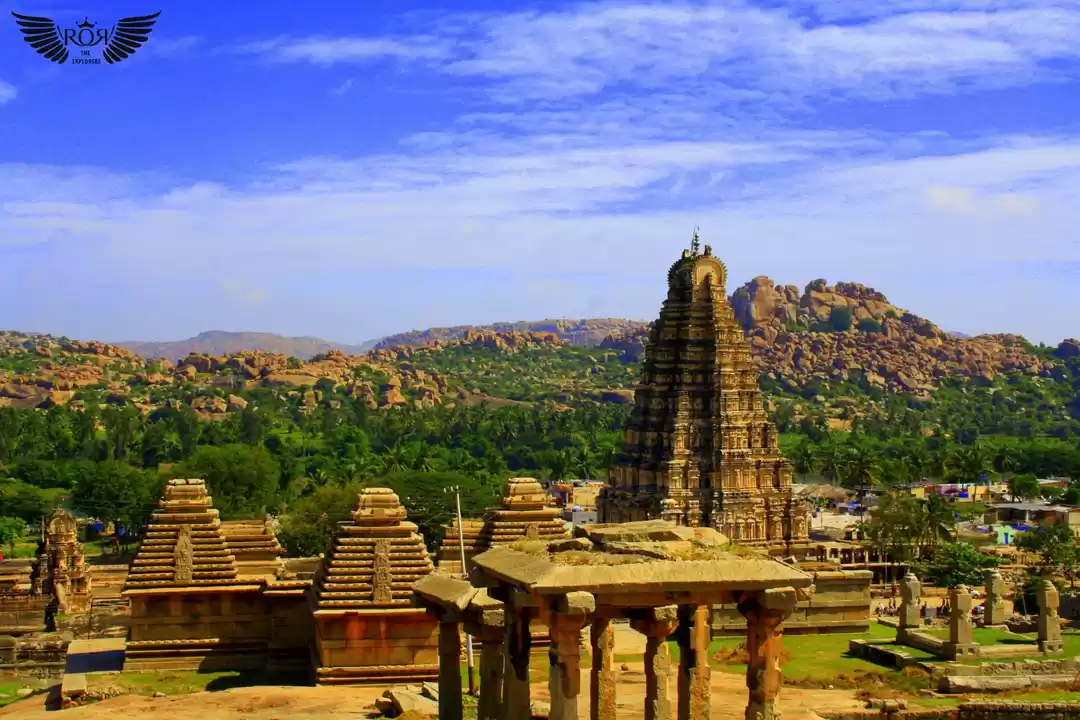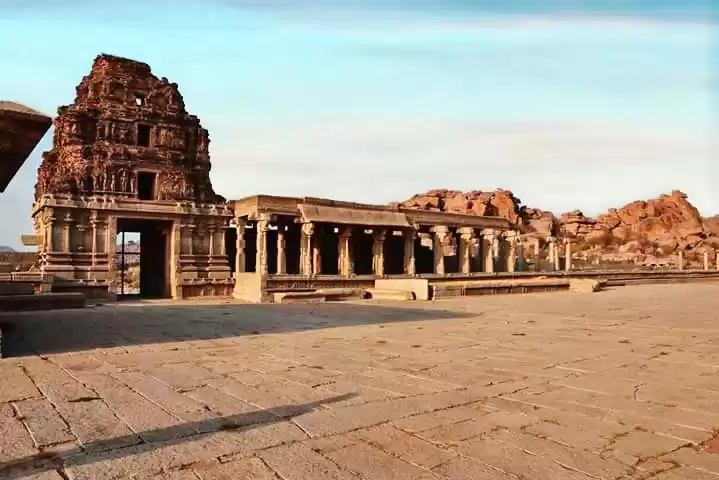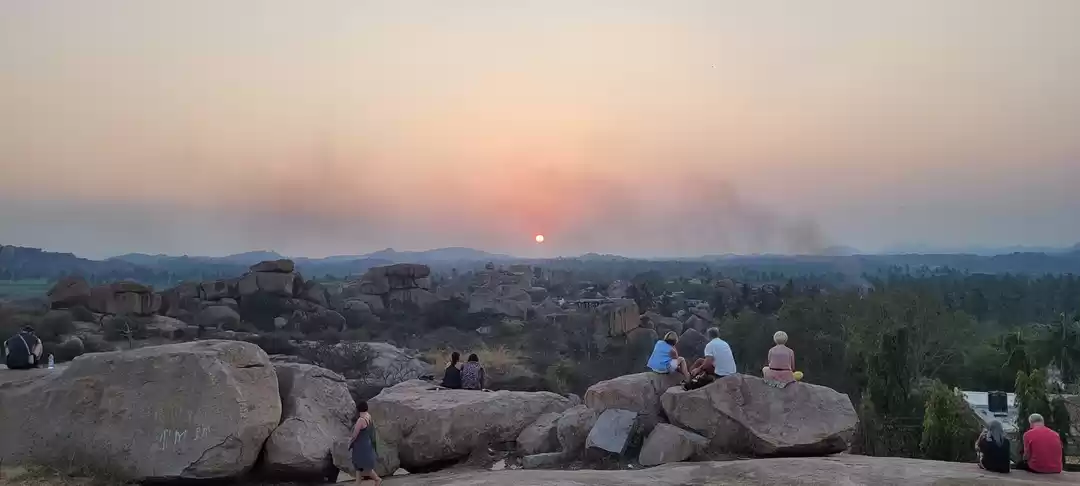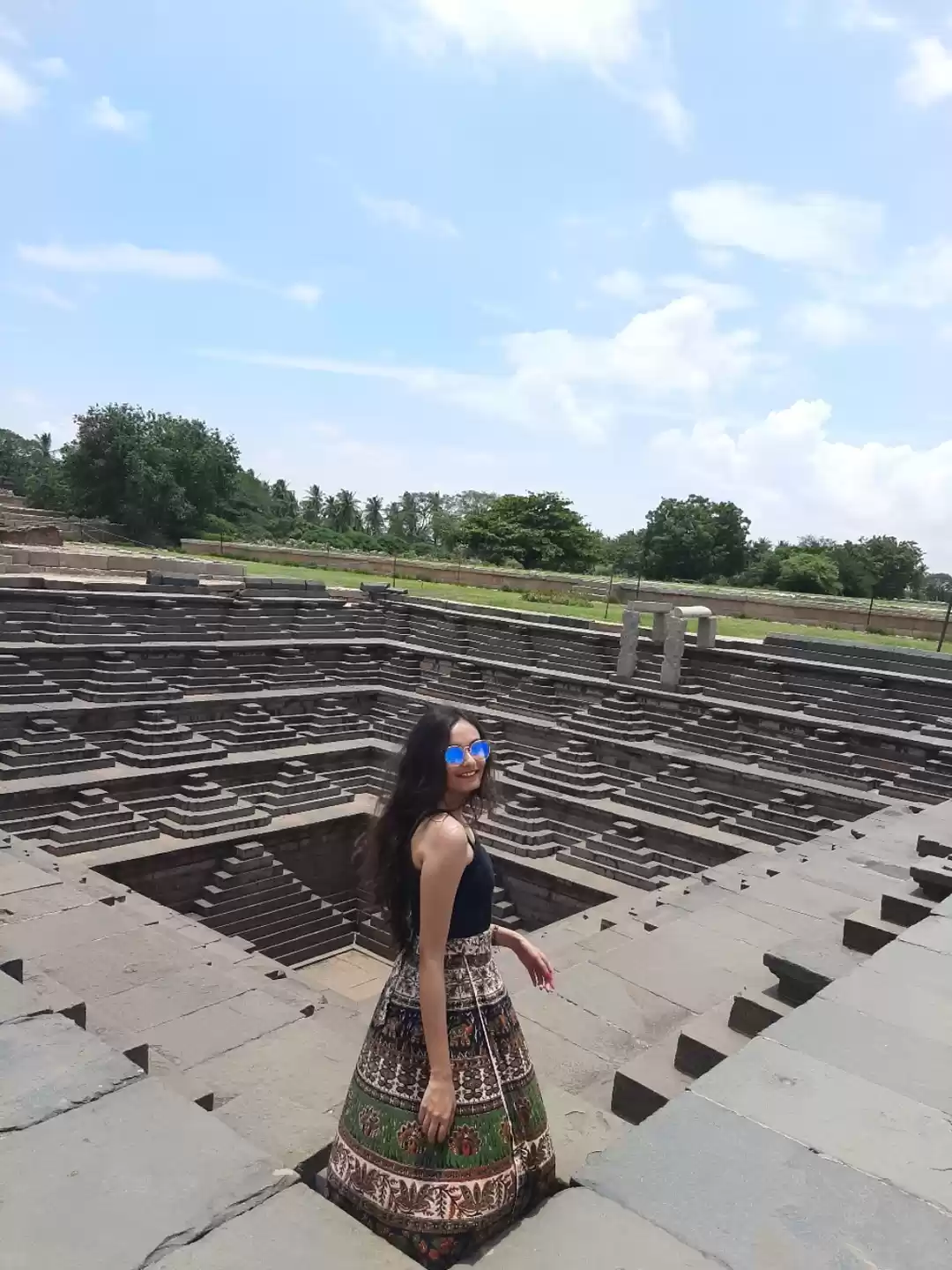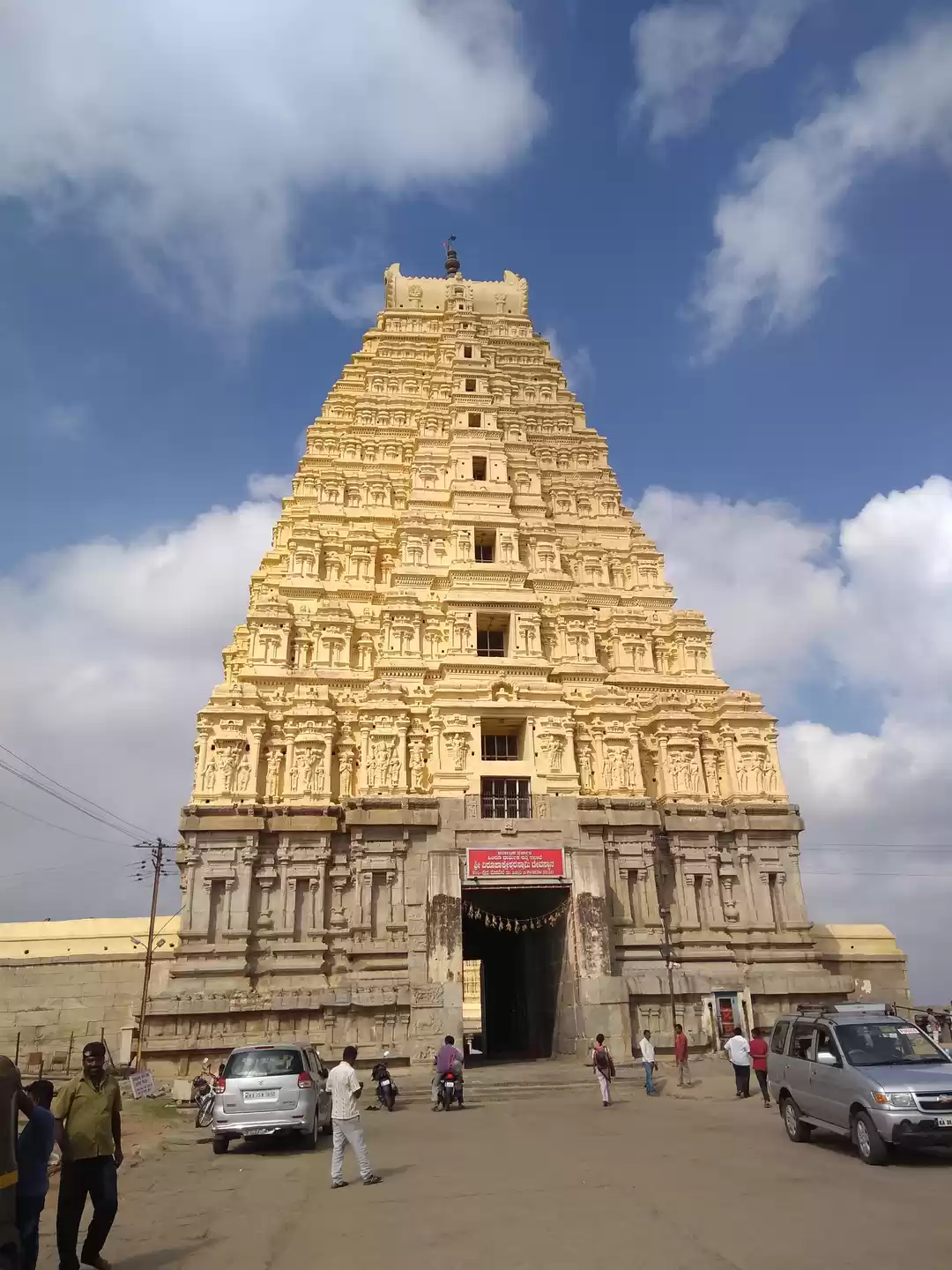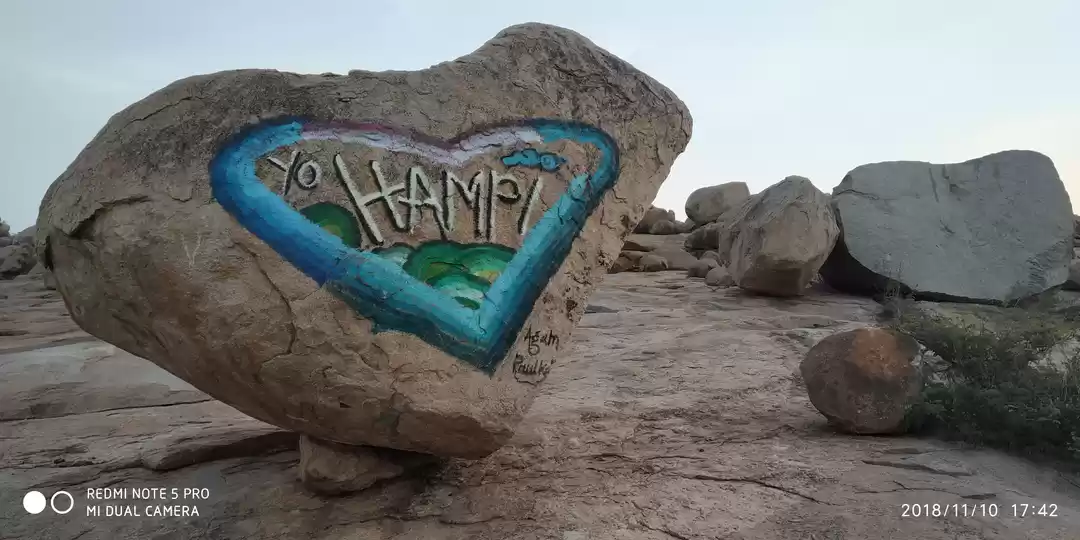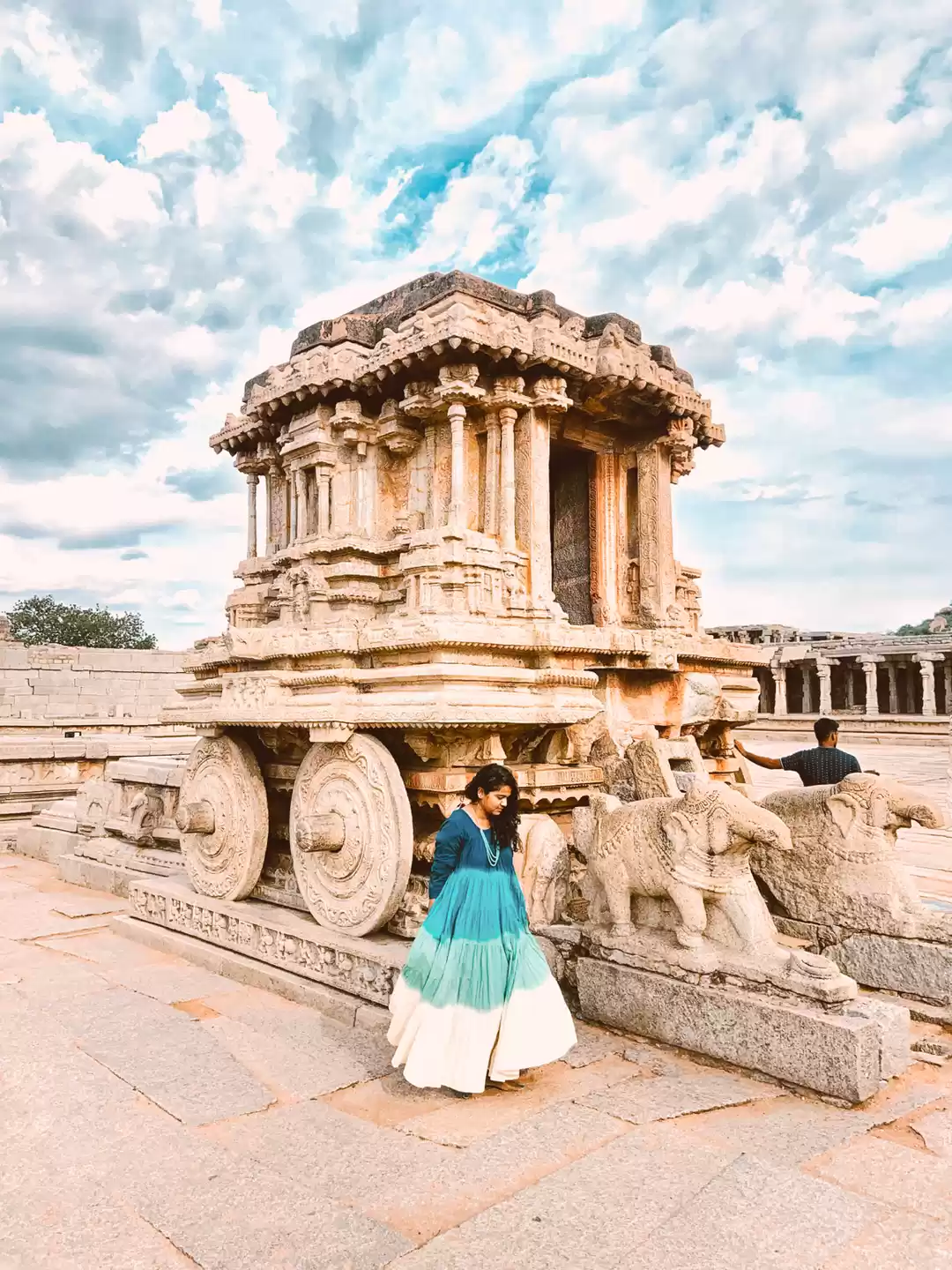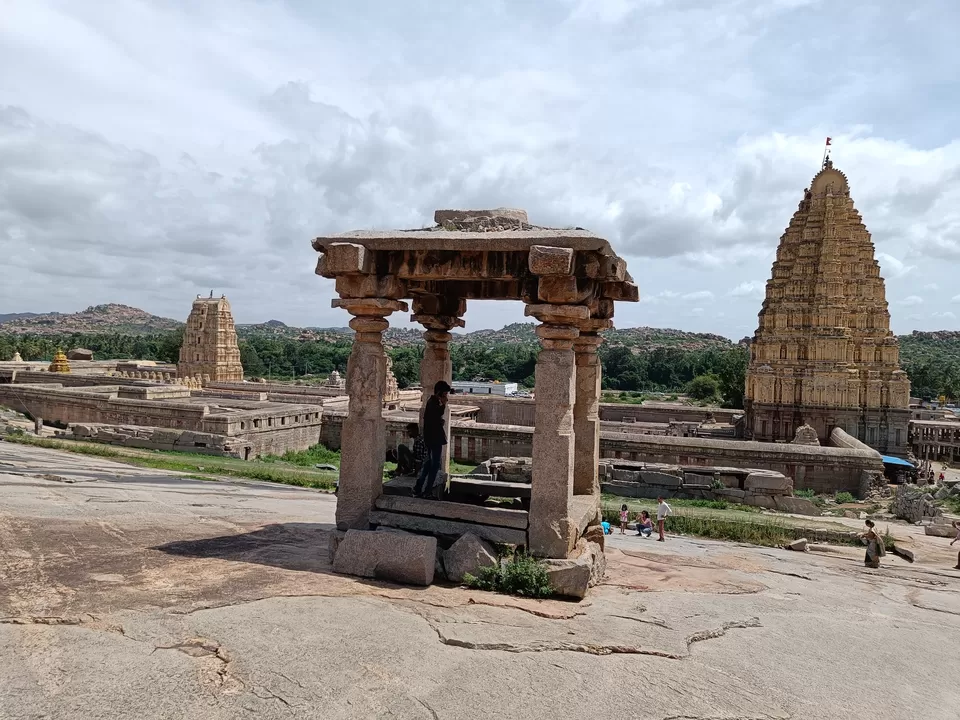
History, architecture, art has always been fascinating for me. Unlike the Hindu shrines in other parts of India, what makes the temples in South India unique are their grand structure, done beautifully in Vijaya Nagara and Dravidian styles. Like literally, you’ll find no compromised work of art anywhere in South India especially when it comes to the Hindu temples where a plethora of devotees throng from the world over. Each shrine in South India, irrespective of its location displays fine artwork not only in the interiors but also outside on the Gopurams (spire).

This weekend was dedicated to such a place which is a mixture of history, architecture and art. Hampi – an UNESCO world heritage site. Hampi sits across the mighty river Tungabhadra, a region once ruled by the glorious Vijayanagara emperors. The ancient Chalukyan rock-cut temples of Badami and Aihole are also not far away from the Hampi site. Hampi is situated on the banks of the Tungabhadra River, midst rocky hills. It is 348 kilometres (216 mi) from Bangalore, 385 kilometres (239 mi) from Hyderabad and 266 kilometres (165 mi) from Belgaum. The closest railway station is in the city of Hosapete (Hospet), 13 km away. The picturesque beauty of the ancient and medieval structures on the top of hills and boulders make Hampi an Open Museum, “a Historian’s Paradise” indeed.
Traditionally, Hampi flaunts the legendary names of Pampa-Kshetra, Kishkindha-Kshetra and Bhaskara-Kshetra. The present-day small village of Hampi was once the grand and prosperous capital city of the Vijayangar empire. Historians believe that at the zenith of its glory, in 1500, Hampi-Vijayanagara was the second-largest medieval-era city in the world after Beijing and probably the richest in India. The city attracted its share of Portuguese and Persian travelers who give a grandiose description of the city. These factors led to Hampi’s declaration as a UNESCO World Heritage Site in 2003, describing it as an “austere, grandiose site”. The several ruined yet grand structures speak of the magnificence of the once large and flourishing empire of the Vijayanagar dynasty.


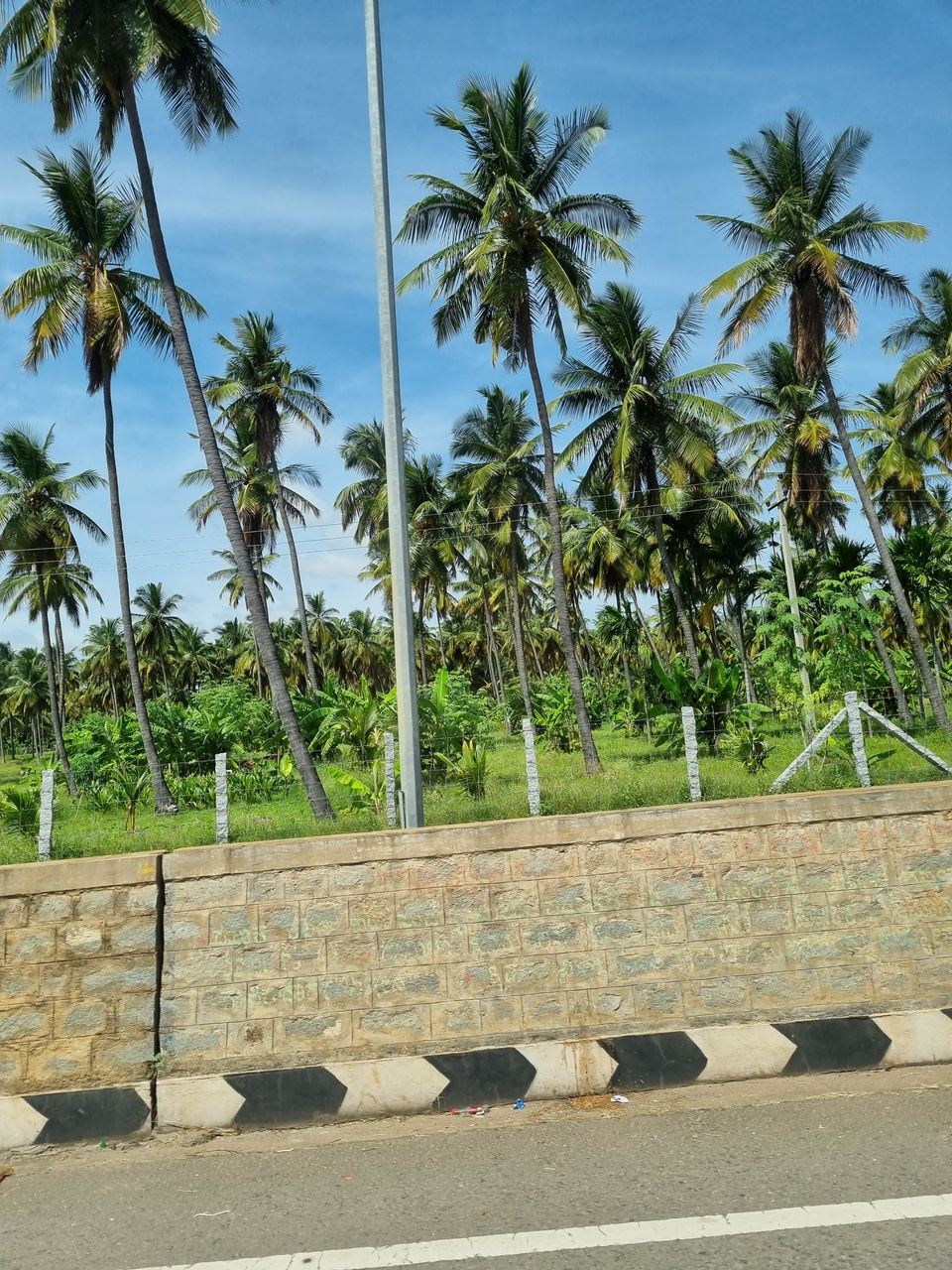
Day 1
Ideally Hampi is a 2-3 days trip, however due to lack of leave balance we could spend only Saturday and Sunday. We started from Bangalore in our private car at 6:30 am. We reached Hampi at 2pm. In between we took a breakfast halt. The roads are beautiful, having small hills on both side of the road, windmills walking the whole way with you. We also halted at a view point for Tungabhadra river, that falls on the way.






We had our stay at Clarks Inn, that is just opposite to the archeological museum. As we were already late and the monuments close at 5:30, we had a quick lunch, and left for Vijay Vittala Temple and the Golden Chariot of Hampi. This is the great chariot which is found in 50 rupees note. From the entry of the temple, you can take electric van to reach the main gate of the temple, but you need to stand in queue. It was a serpentine queue, so we preferred walking. And luckily, we saw other small temples, place for bath, scenic beauty etc. You need to book tickets for entry. The ticket is applicable for all sites for the same date.
Vittala, a form of Lord Vishnu, was worshipped by the cattle herds as their deity in this part of the country. Although the temple has its origins in the 15th century AD, many enhancements have been made by the successive kings bringing the present-day structure into existence. The most significant highlight of the Vittala temple is its stone chariot. The shrine takes the form of a temple chariot. An idol of Garuda is believed to have been placed within its sanctum. According to Hindu mythology, Garuda is the vehicle of Lord Vishnu and it’s facing the temple’s sanctum is quite symbolic. Presumably, this is the largest temple in all Hampi. The works of sculptors and artisans of Vijayanagara era can be seen along the lines of the temple. The architecture is that of Dravidian style, and also draws inspirations and characteristics of typical south Indian temple architecture. Some believe that the main shrine had one enclosed Mantapa; the open one had only been added in 1554. The temple is also famous for Ranga Mantapa which has 56 musical pillars, known as Saregama pillars. The monument is under maintenance by Archeological survey of India. Many sections are closed now for maintenance.
It was already 5 o clock we completed this monument. We entered Archeological survey of India museum, which had many sculptures, models which were excavated from Hampi. Post this we had leisure time which was well spent in the pool of the hotel. For dinner we tried exploring outside but it was all in vain. You don’t have good options there, need to depend on hotel’s restaurant.




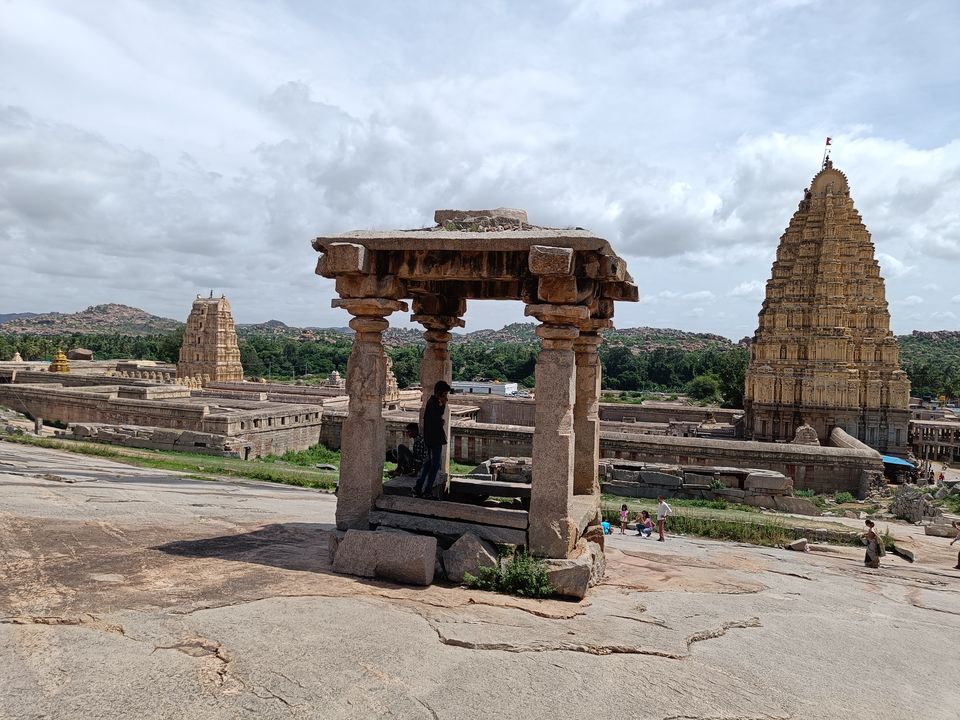



Day 2-
ay 2 started with buffet breakfast having quite a lot of options. Then we checked out at 9 am, and started our journey towards Virupaksha temple. The Virupaksha Temple in Hampi is dedicated to lord Shiva. The distance from Bangalore to Hampi is about 350 km. Hampi is a temple town in South India and is acknowledged as one of the World Heritage Sites of UNESCO. Virupaksha Temple is dedicated to lord Shiva. This temple was constructed in Lakkana Dandesha’s assistance who was a commander under King Deva Raya II.
You can take a guide but bargaining is must. You can get books on hampi and fridge magnets as well in the premises and outside also. We bought a book and fridge magnet at Rs 160 and Rs 40 respectively after lot of bargaining.
After leaving the temple premises, taking the shoes from the stand we headed towards the Hemakuta hill. There are more than 35 temples on the Hemakuta Hill. The largest and most elaborately decorated temples are situated on the northern side of the hill and face the Virupaksha temple compound. On the way to the southern side of the hill is the ancient or the original Virupaksha temple. The view from top of this hill is extraordinary.
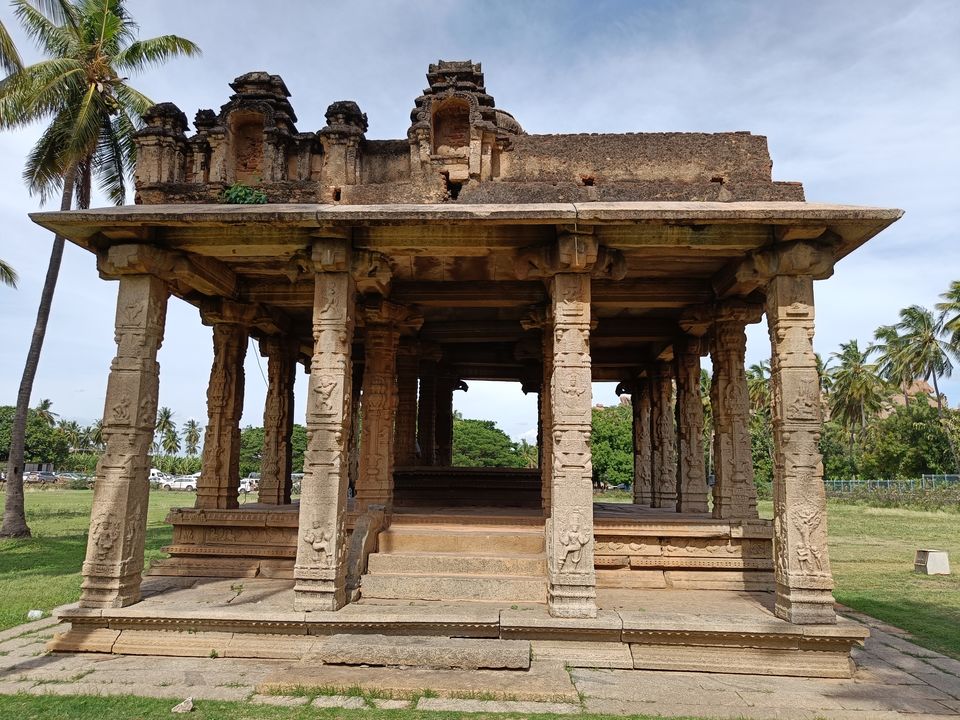







Next we left for Lotus Mahal Hampi, Lakshmi Narasimha Temple, Badavilinga Temple, Hampi Bazaar Street, Sri Krishna Temple, Elephant's Stable. It took around 5 hours to visit all this. And we left for Bangalore at 3pm. Took a break for lunch and reached Bangalore at around 10 pm.
Ending the trip with beautiful images in phone and memory. It would be great if one reads the history if the place before visiting Hampi, then will be able to relate more. You can visit https://www.karnataka.com/hampi/ for all the knowledge related to Hampi. Overall the trip costed 4500 per person as we a group of 8 people. Hotel Clarks Inn is highly recommended hotel. Good food, but rates are high. The place was moderately hot in month of June, would recommend cotton clothes and umbrella. Have your own food for the long journey.



